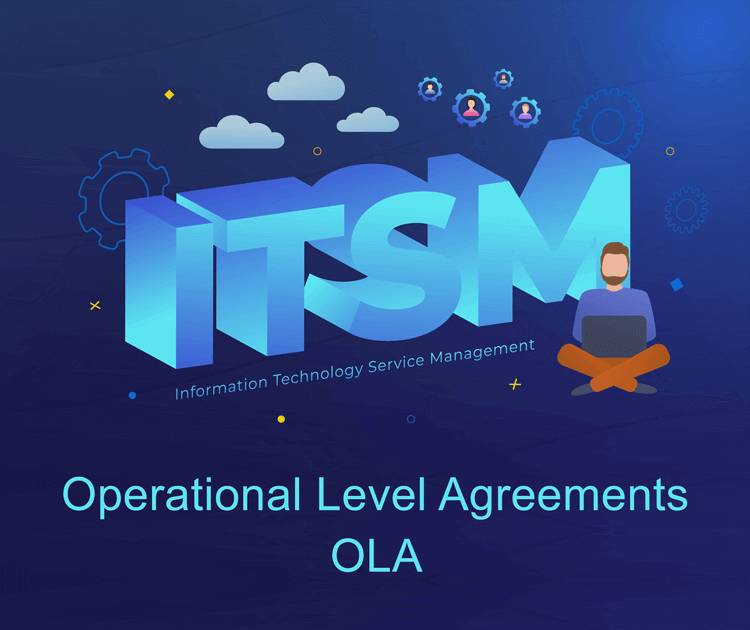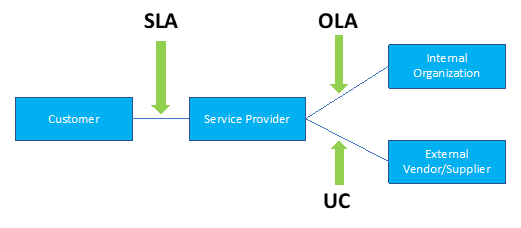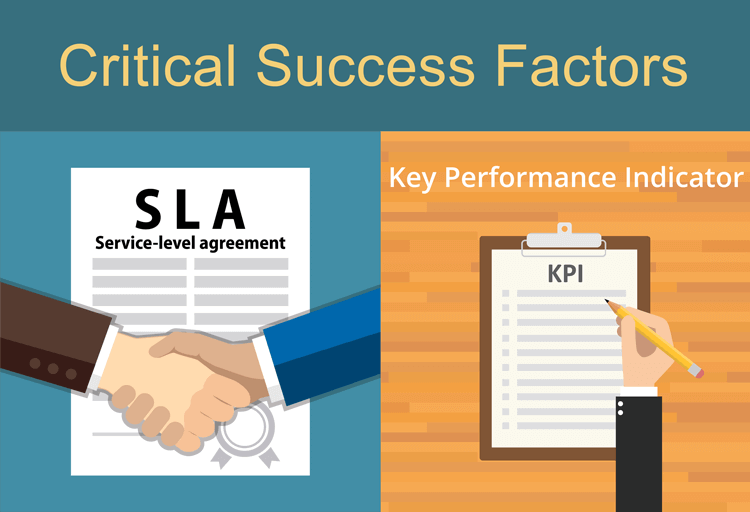Operational Level Agreements (OLAs): The Foundation to Every Service Level Agreement (SLA)
The Service Desk Manager arrived at the ITIL Service Manager's office and found her staring out the window. He politely knocked, and the manager invited him to sit down, saying, "Glad to see you back. How is your SLA project going?"
"Progressing, thanks to your guidance."
"That is great! Tell me what you have done so far."
"I met with several key business leaders and explained the project and what a Service Level Agreement is. They are excited about us addressing their critical needs, and they are looking forward to a continuous improvement process partnership. However, I am not experiencing the same excitement from the various IT departments. I thought they would love to know what the business needs."

OLAs are Not SLAs
"Not surprised at the cool reception. It is common in IT organizations. Welcome to the world of SILOs. The silo effect is a term to describe how compartmentalization creates inefficiencies and confusion between employees and departments. Is that what you found?"
"Exactly! The functional teams think all is well, and there is nothing to fix."
"The challenge you now have is to encourage the functional teams to work together in support of your SLA goals. It is not easy or quick, but OLA might be the answer."
"What is OLA?"
"In ITIL best practices and ITSM (IT Service Management) frameworks, an Operational Level Agreements, or OLA, represents the relationship between an IT Service Provider and another part of the IT organization.
"IT departments write OLAs to address and solve the problem of IT silos by setting forth a specific set of support criteria and defining the particular set of IT services that each department is responsible for."
"Then, what is the difference between SLA and OLA?"
"Notice in this diagram how they all work together. SLAs between customers and service providers to define CSF (Critical Success Factors), KPIs (Key Performance Indicators), and guidelines for how they work together. OLAs between the internal organizations representing responsibilities in support of the SLAs. UCs are Underpinning Contracts (i.e., legal documents) with partners and suppliers supporting OLAs, hence SLAs.

Value Streams Plus Processes Equal "OLAs"
"ITIL 4, while not explicitly calling them OLAs, uses the terms Value Streams and Process.
"A Value Stream is "a series of steps an organization undertakes to create and deliver products and services to consumers."1
"A Process is "a set of interrelated or interacting activities that transform inputs into outputs. A process takes one or more defined inputs from the Value Stream and turns them into defined outputs. Processes define the sequence of actions and their dependencies."2
"Here is just one of many OLA examples.
How to make the New Hire Experience One to Remember through OLAs
"At the Service Desk, do you manage the onboarding of new employees?"
"Yes, we do. Usually, an admin assistant contacts the service desk and lets us know that they have a new employee starting in a week, and they want assurance everything is ready when they arrive."
"And then what do you do?"
"We create many service requests and send them to multiple departments to let them know about the new hire."
"How does that work for you and your Service Desk team?"
"Not well. Sometimes one department is waiting on another department to do something first before they can do their job. When my department gets a follow-up call from the admin for a status update, we spend a lot of time tracking down all the parts. Good communications are lacking, making admins nervous that we do not know what we are doing. The worst part is we cannot tell the customer with certainty when we will finish the onboarding."
"What impression does the new employee have of IT?"
"Not a good one."
"Do you have an onboarding OLA?"
"No."
"That is not a surprise. What you described is a perfect example of a Value Stream waiting for OLA management. Can you think of any other Value Streams?"
"Sure. When someone orders a new laptop, wants access to one of our applications, or even has an application loaded on their laptop, changing offices, incident escalation, and service request escalation. Value streams are everywhere."
"I think you have got a good grasp of Value Streams. Now, I want you to imagine how many Value Streams there are in IT and how you could not only map Value Streams but incorporate them into OLAs.
"Before I send you off with your new homework, there are at least six steps for designing OLAs:
- Use the Service Catalog to define all IT services.
- Assign functional teams the task of documenting their role in delivering and maintaining each service.
- Identify the key players (e.g., infrastructure, server, applications) and their responsibilities.
- Document each functional teams' expectations for delivering each service, that is, what they need from other groups to do their work (i.e., constraints).
- Include contingency plans for unexpected events.
- Test and retest OLAs and make changes when needed. OLAs, like SLAs, are not static and should have an owner, review dates, and revision procedures. OLAs are configuration items logged into the configuration management system (CMS).
"Now for your homework. Take the onboarding process, contact all the various teams responsible, and discuss what you can do to make it easy for everyone. Looking forward to seeing what you produce and what you learned from the exercise."
How to Create OLAs as Efficiency Roadmaps
A week later, an excited Service Desk manager returned.
The ITIL Guru could see the excitement. "Tell me what happened with your homework."
"We started with just one group, the desktop support team. We invited the team to Harry's Diner for dinner We told them that the Service Desk wanted a greater understanding of what Desktop needed to make their job easier. I do not know whether it was the free food or our offer to make it easier, but they liked the idea.
"We met last Friday. After we all introduced ourselves, I pulled out my tablet and said, 'Besides just getting to know each other better, I want to hear how the Service Desk can better support your Desktop team. I had quite a list when we finished. Nothing earth-shattering, just little things, like incident and request documentation, and that we did not always ask the right questions of our customers. I replied that we did not know and that we have never had any training by Desktop.
"When the Desktop team was through with their list, it was my Service Desk team chance to list all the things we would like from Desktop to make our job easier.
How OLA's support continuous improvement
"By the time the dinner was over, we had an action plan.
- The Desktop team will conduct training for the Service Desk.
- They will review all escalated incidents and service requests to identify what my team could do better with training, tools, and knowledge articles.
- Jointly, we will document our mutual value streams looking for efficiencies with the end goal to automate best practices.
- We will jointly design an audit for our data records to document the characteristics of a high-quality ticket.
- We will create customer surveys to determine what our customers think of the service they currently receive from the Service Desk/Desktop and put a project in place for continuous improvement.
- As part of all this, we agree to build comprehensive OLAs between our teams.
- And, this is the best part, to measure our success is a KPI to measure the shift left of once Desktop-exclusive tickets to Service Desk tickets with customer satisfaction as the balanced scorecard metric."
"WOW! All that from one meeting?"
"Yes. There are significant pent-up frustrations. Interestingly, by framing this project as a way the Service Desk can make their Desktop life better, the barriers all came down."
"You have accomplished much more than I could imagine you could do in such a short time. You are well on your way to support all your SLAs with detailed OLAs that deliver excellent service for your customers. You should be proud of your efforts to become a strategic asset for the company. You will be back to learn other best practices. The fun has just begun."
Footnotes:
1. AXELOS Global Best Practices, ITIL 4 Edition, 2019 p.32
2. Ibid., 33.





